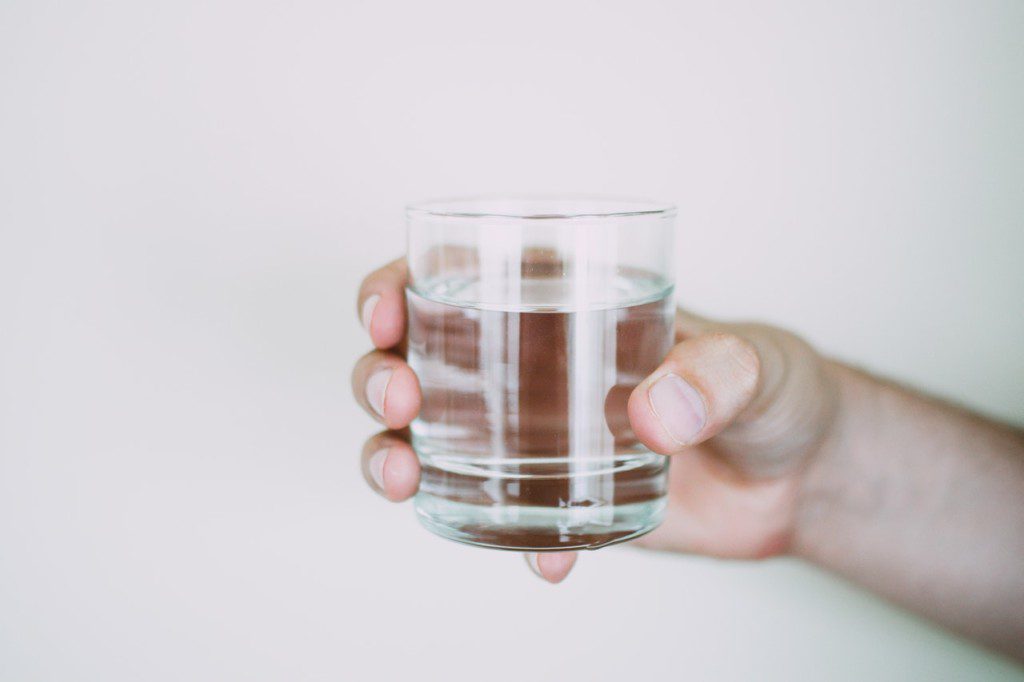06/27/2023 | Drinking Water | 8 MINUTE READ
The Surprising Benefits and Safety of Chloramines in Your Drinking Water

Water is derived from many sources, which include everything from lakes and oceans to wells. Regardless of the source, water can be contaminated by numerous germs that are capable of making people sick. A large amount of this contamination occurs as the water is traveling through piping to be delivered to residential households. To ensure that contamination is limited, water providers often add chlorine or chloramine to the water, both of which are disinfectants. These disinfectants can kill such germs as norovirus and salmonella.
The majority of municipalities use either chloramines or chlorine in order to treat water. However, some communities will switch between these two substances depending on the time of year. In certain situations, utilities will use a couple other types of disinfectants, the primary of which is chlorine dioxide. In the event that water is obtained from a community well or similar groundwater source, a disinfectant doesn’t need to be added. In this guide, learn more about the many advantages of having chloramines in your drinking water.

What are Chloramines and How are They Used in Drinking Water Treatment?
Chloramines are disinfectants that are formed by adding ammonia to chlorine during water treatment. These substances provide long-lasting disinfection while water travels from pipes to consumers, which is a benefit that no other treatment is capable of delivering. Chloramines have been used by water treatment facilities and municipalities since the 1930s. Today, more than 20% of Americans obtain drinking water that has been treated with chloramines. This substance is created by adding ammonia to chlorine. Once applied to water, the disinfecting properties should remain in place until the water reaches your home.
The various types of chloramines that can be used as disinfectants include organic chloramine, monochloramine, dichloramine, and trichloramine. While all types of chloramines are capable of disinfecting water, monochloramine is currently the most commonly used form. The other three types are usually produced to treat drinking water at significantly lower levels when compared to monochloramine. Trichloramine is often placed in swimming pools to disinfect the water.
To understand how important chloramines have been for water treatment purposes, keep in mind that illnesses and death were common as a result of contaminated water before disinfectants were available. While there are several different types of disinfectants that can be used to treat water, chloramines have proven to be the most effective. Once the water has been disinfected, the possibility of illness is nearly eliminated.
Proper disinfection will kill viruses, bacteria, and other types of harmful organisms that can be found in drinking water. It also helps to prevent infectious diseases like hepatitis, cholera, and typhoid fever. Monochloramine is useful at eliminating the harmful organisms that are known to cause Legionnaire’s disease.
Is Water Treated with Chloramines Safe for Consumption and Daily Use?
If water consists of chloramines and adheres to other EPA regulatory standards, you can use it for bathing, drinking, cooking, and other household purposes. Numerous studies have shown that chloramines at levels below 50 mg/L in drinking water don’t cause adverse health effects. The use of chloramines as a disinfectant is currently recognized as safe and effective by the EPA, which means that you don’t need to worry about the effects.
When chloramines are placed in water, they kill bacteria by getting into the cell wall and blocking the metabolism process. When microorganisms become deactivated, chloramines destroy the shell that effectively protects a virus. The pH value of water doesn’t determine how effective chloramines are as a disinfectant.

Why Do Some Water Utilities Switch from Chlorine to Chloramines?
Chlorine is a highly effective disinfectant. However, it can produce disinfection byproducts in pipes when reacting with germs or dirt in the source water. In this scenario, the byproducts would make the water less healthy to drink, which is why chloramines are preferred by municipalities. Chloramines offer the advantage of longer-lasting disinfection while also producing fewer disinfection byproducts.
The Environmental Protection Agency (EPA) provides water treatment plants with the means of using chlorine and chloramine to properly disinfect drinking water. Over time, water pipes can develop a thick layer of biofilm that makes it more difficult for germs to be killed. Water providers will sometimes switch over to chlorine disinfection to help remove the biofilm.
Even though chlorine is often used by municipalities, some water utilities have switched over to chloramines on a long-term basis to meet current EPA standards that are centered around reducing the amount of disinfection byproducts in the water. Along with the byproducts that are produced by chlorine, this substance is also used up in a short amount of time when placed in a water system. It’s possible that the chlorine will dissipate too quickly to kill all of the germs in the water. Municipalities must take all of these factors into account when making sure that the water they treat is safe for consumers to drink.
Addressing Common Concerns and Questions about Chloramines
The EPA has provided answers to some of the more frequently asked questions about chloramines in order to address customer concerns. This information is presented in a simple question and answer format. All responses to these questions are written at a sixth-grade level and are supported by more comprehensive information that’s provided at a twelfth-grade level. Ongoing research by the EPA ensures the evaluation and possible update of this information as new data is discovered.
Chloramines and Dialysis, Pets, and Plants
Even though chloramines are highly effective at reducing the concentration of various contaminants in many different types of water, these disinfectants sometimes need to be removed from water because of the potential for dangerous reactions.
For instance, dialysis centers remove all chemical disinfectants from the water before it’s used during this treatment. These disinfectants include chloramines and chlorine. Home dialysis users are also tasked with performing this process to make sure that the dialysis treatment goes smoothly. During the dialysis treatment, a considerable amount of water is used to remove waste products from a patient’s blood.
Chloramines are known to be toxic to a person’s blood. Patients may develop a certain form of anemia that results in the blood being unable to carry the right amount of oxygen to the rest of the body’s cells. Keep in mind that rubber components are also susceptible to damage from being exposed to water that contains high levels of chloramines.
These disinfectants are also highly toxic to fish, amphibians, reptiles, and aquatic animals. All of these animals are capable of absorbing water into their bloodstreams, which is why the disinfectant is dangerous. If you have any fish at home, make sure you keep them in water that’s free from these contaminants.
It’s possible to remove chlorine from water by making sure it’s exposed to air for a few days, after which the disinfectants should have dissipated entirely. If you have any pets that fall into the above categories, your local pet store likely carries products that more efficiently remove chlorine from water. These products can remove chloramines from aquarium water as well as chloramine-treated water, which will make it safe for plants, mammals, birds, and pets.
It’s possible to remove chloramines from water via a process known as catalytic carbon filtration, which involves an activated carbon that is effective at removing these contaminants. Catalytic carbon is one of the only types of filtration media that’s able to properly reduce chloramine concentration levels. Carbon filters aren’t as effective at removing chloramine. The reason that chloramines are difficult to remove from water is because of their potency as a disinfectant.
There are also several under-sink solutions for you to consider, which include ultrafiltration and reverse osmosis. These solutions, however, are costly and may not be worth it unless you want to use them to remove other contaminants from your water. While chloramines can produce a small amount of skin and eye irritation, solutions like reverse osmosis can only be placed under one fixture in your home. It’s also important to understand that these disinfectants shouldn’t cause too much irritation. In general, they are healthy for you.

Conclusion
Chloramines are known to play a crucial role in drinking water disinfection, providing long-lasting and effective disinfection. Even though water treatment facilities have many other treatments they can use, chloramines and chlorine are capable of eliminating a wider range of contaminants when compared to other solutions.
Water that’s treated with chloramines is safe for consumption and daily use since it meets EPA regulatory standards. While using chlorine as a disinfectant can lead to harmful byproducts being produced, the amount of byproducts that chloramines create is substantially lower.
By understanding the many benefits as well as the safety of chloramines, you can more readily address the concerns associated with these disinfectants and ensure access to clean and disinfected drinking water for all.
Posted by Dominic O'Donnell on June 27, 2023
Sensorex is a global leader in the design and manufacture of quality sensors for water quality and process applications. The company offers more than 2000 sensor packages for pH, ORP, conductivity, dissolved oxygen, free chlorine, chlorine dioxide, UV transmittance and other specialty measurements, as well as a full line of sensor accessories and transmitters. Its expert technical support engineers solve analytical sensor challenges with custom designs and off the shelf products.




